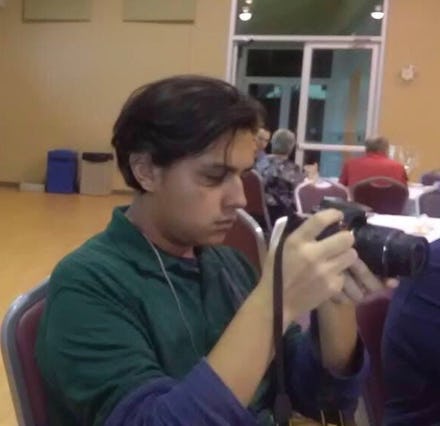ICE detains teenage DACA recipient in connection to “Occupy ICE” protests

It happened quickly on Friday morning: One moment, 18-year-old Sergio Salazar was loping around the “Occupy ICE” encampment in San Antonio, Texas, where he and a contingent of other high school and college-aged kids had been staked out in nonviolent protest for weeks. The next, he was being hoisted into the back of a van, shackled and interrogated by the FBI.
Salazar, 18, is part of a burgeoning youth-led resistance movement that opposes Immigrations and Customs Enforcement. But on Friday, after ICE agents drove him behind a nearby abandoned Walmart and stripped him of his personal belongings, he was transported to the Webb County Jail in Laredo, Texas, where he is currently being held on what FBI officials described to him as accusations of impeding an officer and threats of “bomb making,” according to the Refugee and Immigrant Center for Education and Legal Services.
“They asked Sergio to give information about his friends, who are part of the ‘Occupy ICE’ movement,” Jennifer Falcon, communications director for Raices, said in a phone interview. “He declined.”
Raices had already been working with Salazar to renew his DACA status prior to his arrest, according to Falcon. On Friday — the same day a federal judge once again ordered the government to restore the Obama-era DACA, or Deferred Action for Childhood Arrivals, program — she says Salazar was informed that a request for an extension of his legal status under the program had been denied a day earlier, as a result of the accusations against him.
According to Falcon, the San Antonio “Occupy ICE” movement has been “strictly nonviolent,” and has consisted mostly of young people handing out water bottles and toys for immigrant children who arrive at the ICE field office with their families for required check-ins. The camp is a local outpost of the national “Occupy ICE” movement, which has bloomed in cities across the country over the summer, from Portland, Oregon, to New York City.
“They’ve not made any bombs,” Falcon said. “Sergio says he’s never mentioned a bomb or done anything of that nature, so he doesn’t understand how they could get a search warrant to go through his phone.”
According to Falcon, Salazar and his family immigrated to the U.S. from Mexico when he was 2 years old. Aside from a grandmother that he has not seen since he was 4, Salazar has no family in Mexico; the U.S. is the only country he’s ever known. Raices is readying paperwork that could have Sergio released on bond within two weeks, she said, but stressed that the organization feels that no money should have to be spent in order to secure his release.
“He wasn’t even aware that his DACA was denied — it was very obvious that they arrested him the day of,” she said. “He was clearly targeted, and it’s just unbelievable.”
Seemingly in concert with President Donald Trump’s widely criticized decision to prosecute and separate immigrant parents and children at the southern border, the Abolish ICE movement has exploded in popularity in recent months. Mainstream political candidates like Randy Bryce, who is running to unseat Paul Ryan in Wisconsin’s 1st Congressional District, and Alexandria Ocasio-Cortez, who in June won the Democratic primary in New York’s 14th congressional district, are now centering their campaign messages around the agency’s demise — and winning.
But the movement’s rise in popularity has not come without tensions of its own. On July 28, as many of the protestors at the San Antonio “Occupy ICE” occupation lay sleeping, roughly 20 masked members of the “Patriot Front” — a Texas-based white supremacist, fascist and neo-Nazi group, according to the Southern Poverty Law Center — laid siege to the camp, inflicting what protestors called “mostly surface-level” damage.
In a recording taken during the destruction, counterprotestors can be heard chanting “strong borders, strong nation” and other racist slurs directed towards the occupiers.
According to Falcon, targeted violence from members of white nationalist groups isn’t the only thing that “Occupy ICE” protestors have to fear. During the course of the occupation, she said, ICE officers routinely came outside with cameras and attempted to snap photos of protestors’ faces.
“I think it raises questions of how the government is using technology to identify these people and figure things out,” she said. Protestors like Sergio, she added, often wear masks for that reason — to “protect their and their families’ identities.”
“Unfortunately, Sergio was the only ‘Dreamer’ or undocumented person at the camp,” she added. “It’s very obvious that they were targeting him, and they knew that they could use him to get information on the rest of them.”
Correction: Aug. 7, 2018